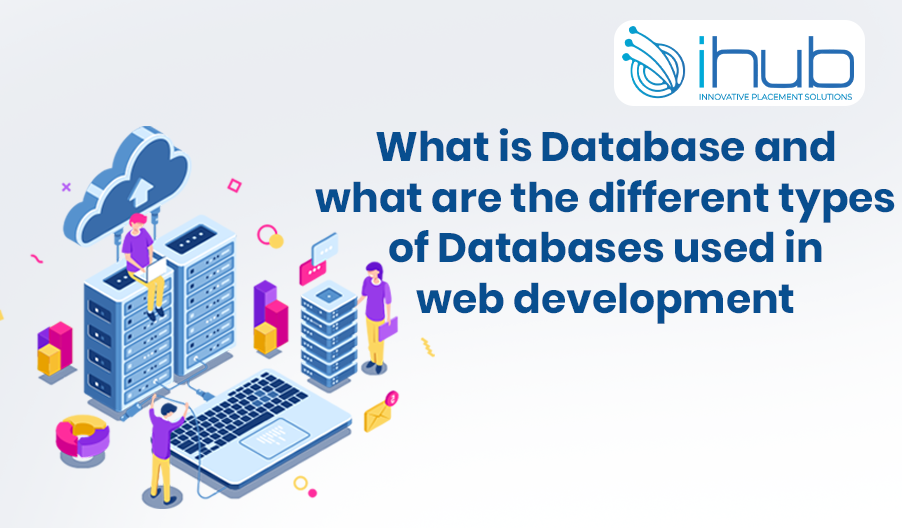What is Database and what are the different types of Databases used in web development?
What is a Database?
The term database refers to a structured collection of organized information, or data, usually stored electronically by a computer. DBMSs are used to manage databases. DBMS and applications are often referred to as the database system, which includes both. Typically, a database consists of rows and columns of data, which allow efficient processing and querying. The data can be accessed, managed, updated, controlled, and organized more easily. The most commonly used method for writing and querying data in databases is structured query language (SQL).
How Did Database come into use?
During the 1960s, databases underwent a dramatic evolution. Initially, one-to-many relationships were allowed in hierarchical databases, while multiple relationships were allowed in network databases. Although these early systems were simple, they were rigid. Object-oriented databases became popular in the 1990s after relational databases became popular in the 1980s. Due to internet growth and the need to process unstructured data faster, NoSQL databases have become increasingly popular. Today, cloud databases and self-driving databases are revolutionizing data collection, storage, management, and utilization.
What is Database and different types of Databases used in web development
An overview of database types
Databases come in many forms. In order to determine which database is best for an organization, one must consider how they intend to use the data.
- The Relational database
A relational database consists of columns and rows of tables. Access to structured information is made more efficient and flexible with relational database technology.
- Databases that are object-oriented
Object-oriented databases represent information in the form of objects, like object-oriented programming.
- Distributed databases
There are two or more files in a distributed database that are located at different locations. Multiple computers may be used to store the database, and they may all be physically located in the same place, or they may be spread throughout a variety of networks.
- Warehouses of data
Designed specifically for querying and analyzing data quickly, a data warehouse is a centralized repository for data.
- The NoSQL database type
Unlike relational databases, where data must be structured and inserted into a database in a specific order, NoSQL databases can contain and manipulate unstructured and semistructured data. Due to the increasing number and complexity of web applications, NoSQL databases have become increasingly popular.
- Graph databases
The data in a graph database is stored in terms of entities and the relationships between them.
- Databases for online transaction processing.
Multiple users can execute numerous transactions at the same time in an OLTP database. OLTP databases are speedy and analytical databases.
In today’s market, several dozen types of databases are available. Scientific or financial databases, for example, have very specific functions. The cloud and automation are driving databases in an entirely new direction, along with changes in technology development approaches. There are several new databases available today, including
- Databases that are open source
Whether it is a SQL database or NoSQL database, open-source databases have their source code available for download.
- Data storage in the cloud
Cloud databases can be structured or unstructured, and they can be found on private, public, or hybrid cloud computing platforms. Cloud databases can be classified into two kinds: traditional and database as a service (DBaaS). A service provider manages and performs administrative tasks on behalf of the client with DBaaS.
- Database with multiple models
Multiple database types can be combined into a single back end in a multimodel database. In other words, they can handle a variety of data types.
- JSON/Document database
Instead of rows and columns, document databases store, retrieve, and manage document-oriented information in JSON format.
- Databases that operate on their own
A self-driving database can also be called an autonomous database, as it uses machine learning to automate tasks normally managed by database administrators, such as tuning, security, backups, and updates.
Concluding,
Databases and autonomous databases in the future
Today, businesses have access to more data than ever before thanks to massive data collection from the Internet of Things. Using multiple sources of data, a database can analyze vast amounts of data. Organizations can now run more efficiently, make better decisions, and become more agile and scalable using databases and other business intelligence tools. As data volumes increase, businesses must optimize access and throughput. For businesses to grow, scalability, performance, and agility are essential.
After the first autonomous database was announced in 2017, several independent industry analysts recognized its potential impact. Using self-driving databases can be a great benefit to organizations who want to take advantage of the latest databases without the hassles of managing them. Self-driving databases can automate many routine tasks, such as tuning, security, backups, and updates. Self-driving databases will enhance these capabilities significantly. Businesses can eliminate time-consuming and expensive manual tasks with self-driving databases. In addition to maintaining security standards, users gain control over databases when they are able to create and use them directly.
We at iHub Talent provide you with the best SQL help if you require a database for Web development, so you can learn MySQL, MongoDB, or Microsoft SQL Server.
Also Read:

